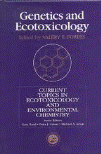Papers in the Biological Sciences
Date of this Version
2009
Abstract
Examples that clearly demonstrate the power of mechanistic effect models (MEMs) for risk assessment are urgently needed, and industry, academia, and regulatory authorities across Europe need scientists that are trained in MEMs, principles of ecotoxicology, and regulatory risk assessment.
To meet these needs, Chemical Risk Effects Assessment Models (CREAM), a European project including 20 Ph.D. and three postdoctoral projects, has been launched for September 2009 and will last for 4 years. CREAM is a “Marie Curie Initial Training Network (ITN)” funded by the European Commission within the 7th Framework Programme. ITNs are part of the commission’s “People” Programme and focus on mobility and first-class training of early stage researchers. CREAM is very likely the largest joint project worldwide developing MEMs for risk assessment of chemicals. The aims and scope of CREAM are:
1. Formulate and test guidance for Good Modeling Practice (GMoP) that ensures transparent and reliable decision support for chemical risk assessment.
2. Develop a suite of well-tested and validated mechanistic ecological effect models for a range of organisms and ecosystems relevant for chemical risk assessments.
3. Provide world-class training for the next generation of modelers, emphasizing transparency and rigorous model evaluation as core elements of models for decision support.


Comments
Published in Environmental Science and Pollution Research 16 (2009), pp. 614–617; doi: 10.1007/s11356-009-0228-z Copyright © 2009 Springer-Verlag. Used by permission.